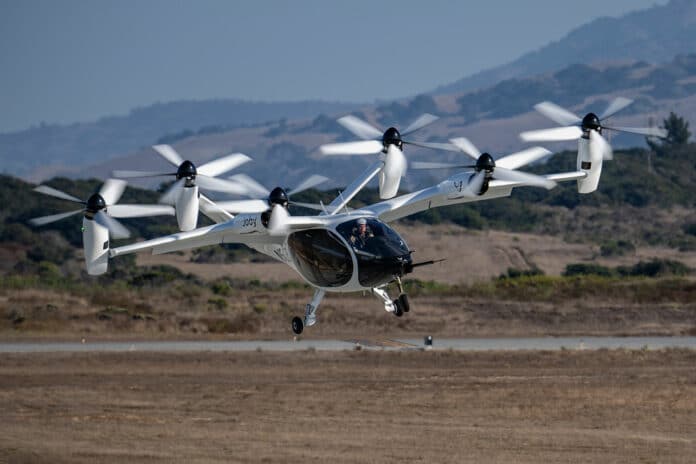Joby Aviation has been conducting full-scale testing of its aircraft since 2017, flying thousands of miles under remote control and setting records for eVTOL speed and distance. Now, the company is taking the next step by expanding its flight test program to include flying with a pilot on board the aircraft, a critical step on the company’s journey toward commercial operations.
Four of Joby’s flight test team members have already piloted flights on board the company’s pre-production prototype air taxi. During the testing, which took place in the company’s Pilot Production Facility in Marina, CA, the team completed a series of initial tests, including free thrustborne hovers and forward transitions to semi-thrustborne flight.
These tests complement the ongoing flight testing at Edwards Air Force Base, where Joby and U.S. Air Force pilots will demonstrate the aircraft’s capabilities in realistic operating scenarios.
Joby’s Chief Test Pilot, James “Buddy” Denham, led the pilot-on-board campaign, designed to gather data on the aircraft’s handling qualities and pilot control interfaces. This testing is crucial in supporting the development of the aircraft and laying the groundwork for future “for credit” testing as part of the company’s ongoing certification program with the Federal Aviation Administration (FAA).
“Having helped design and test flight controls for a wide variety of aircraft, including all three variants of the F-35 Joint Strike Fighter, nothing compares to the simplicity and grace of the Joby aircraft,” Denham said in an official statement. “After completing more than 400 vertical takeoffs and landings from the ground, it is a privilege to sit in the cockpit of our aircraft and experience first-hand the ease and intuitive nature of the design that the Joby team has developed.”
During the testing, Joby pilots assessed the ease of performing various tasks and maneuvers that pilots will be required to perform during normal operations. These included vertical takeoffs, accelerating and transitioning to forward flight, runway centerline tracking, and decelerating to a vertical landing on a representative landing pad.
The evaluation of these mission task elements (MTEs) is crucial in supporting the certification of the Joby aircraft and the company’s ongoing work with the Department of Defense.
By conducting these tests with human pilots on board, Joby can ensure that the aircraft performs as expected in real-world conditions, which is essential for achieving certification and ensuring the safety of future passengers.
